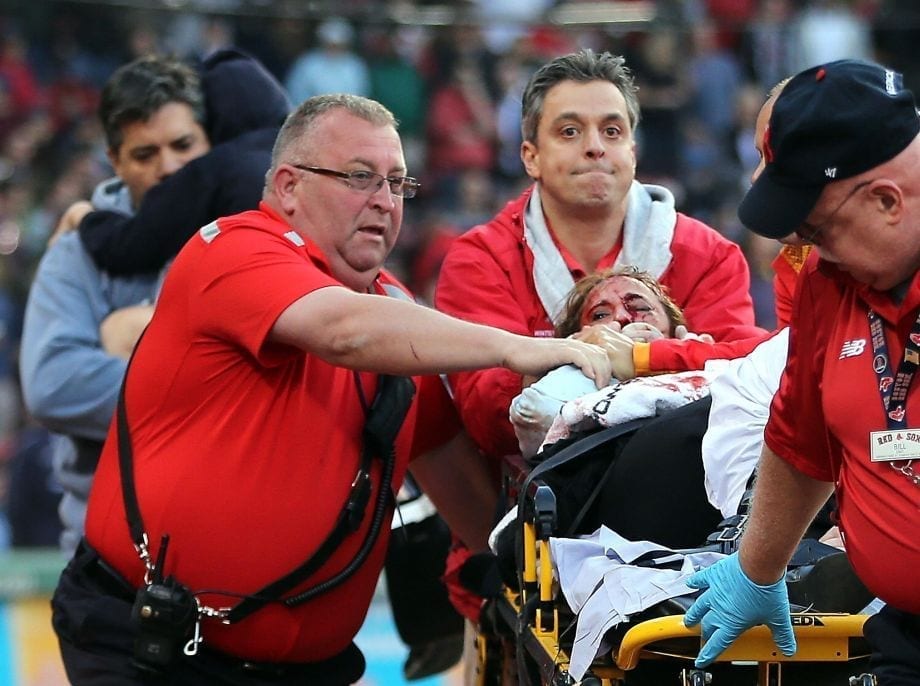7/29/2015

Photo courtesy of Jim Rogash/Getty Images
Longtime Oakland Athletics season-ticket holder Gail Payne has filed a lawsuit against Major League Baseball (MLB) asking the organization to make drastic changes in the netting that protects fans along the foul lines. The suit, filed July 13th in the U.S. District Court of Northern California lists MLB Commissioner Rob Manfred as the defendant. Payne’s attorney, Bob Hilliard, is asking the court to accept the case as a class-action lawsuit, inviting injured fans of all 30 MLB teams to join in the lawsuit. Payne claims that her seats in Section 211 in the Oakland Coliseum along the first-base line put her and family members in danger due to the absence of screen netting beyond the home plate region. The suit is asking MLB to add safety screens along the first and third base lines by the beginning of the 2016 season. Signs are generally present in ballparks in sections close to the field warning spectators to pay attention. Adding the safety netting would dramatically alter the visuals of the game both in person and on television, likely causing many purists to bristle.
According to a 2014 Bloomberg study, over 1,750 people are injured annually during MLB games. Several high-profile injuries have occurred this baseball season, most notably on June 5th, when 44 year-old Tonya Carpenter was nearly killed after being struck by several pieces of a broken bat from hitter, Brett Lawrie at Boston’s Fenway Park. Carpenter is currently recovering at home from traumatic brain injuries having spent a week in Boston’s Beth Israel Hospital. Language in Payne’s lawsuit includes calling some parts of Fenway Park a “slaughter pen.” Another serious incident occurred in San Francisco’s AT&T Park in May, when a boy was carried off for medical attention after being hit by a foul ball. In the lawsuit, Payne asserts that in her seats in Oakland, she is “constantly ducking and weaving to avoid getting hit by foul balls or shattered bats.” Some may note, however, that a woman was hit in the head by a foul ball last week at a South Bend, Indiana minor-league game causing a concussion despite the stadium having extra netting 60-feet up the baselines.
MLB spokesperson Pat Courtney responded to the Carpenter injuries saying, “When you have an issue like this, an incident like this, you have to go back and re-evaluate where you are on all your safety issues, and trust me, we will do that.” The recent explosion of mobile devices and Wi-Fi services in stadiums have been blamed for less attention paid to the field during games, however Robert M. Gorman, author of “Death at the Ballpark,” thinks that is moot in many cases. Gorman said “Even if you’re paying attention, if you’re close enough, it doesn’t matter.” If MLB accommodates the demands made in Payne’s lawsuit, it would not be unprecedented. The National Hockey League implemented additional protective netting in 2002 after the death of 13 year-old Brittanie Cecil in Nationwide Arena during a Columbus Blue-Jackets-Calgary Flames game (which was, coincidentally, the only Blue Jackets game I ever attended in person). Similar litigation has been filed in recent years against the NCAA and FIFA involving spectators who have received concussions during sporting events.
Sources:
Boston Globe – Thomas Farragher
KCTV5 (Kansas City) – Emily Rittman
KSL.com/Associated Press – Christian Scheckler
SF Gate – Kurtis Alexander


Join the conversation!